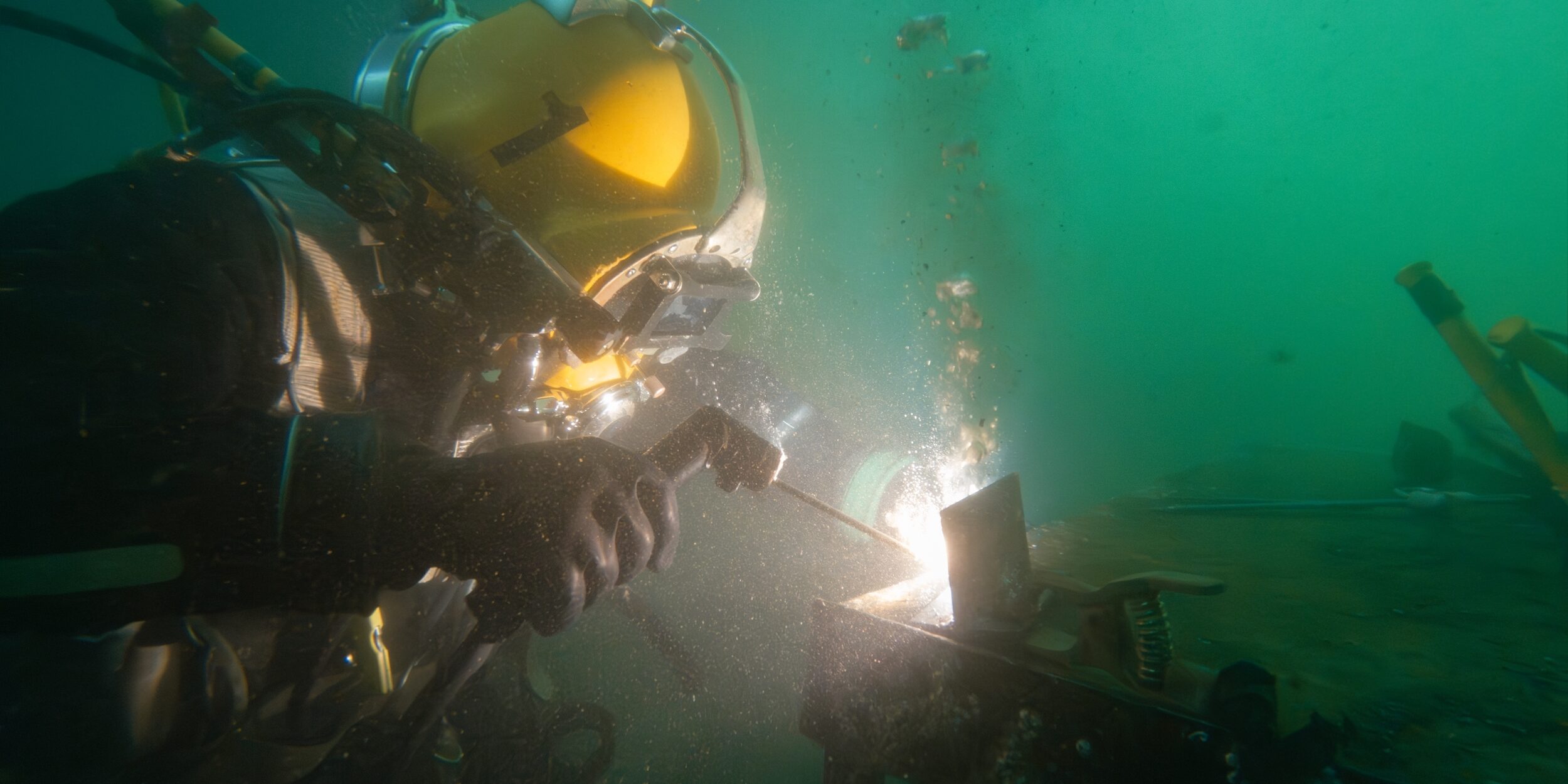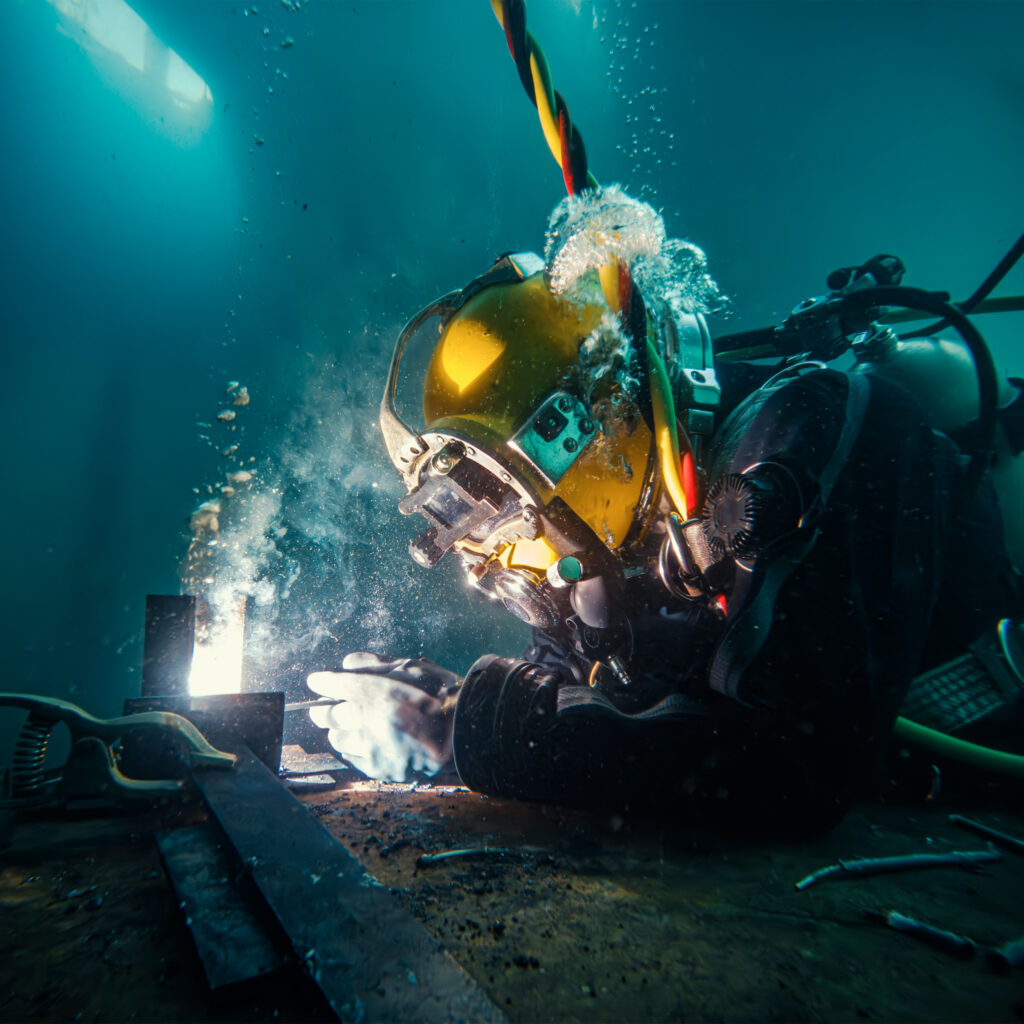Subsea welding plays a pivotal role in the installation and maintenance of underwater infrastructure ranging from offshore oil and gas platforms and pipelines to submarine bases and marine vessels. Traditionally, it has been high-risk, logistically complex, and cost-intensive. Its inherent challenges such as pressurized environments, poor visibility, and diver safety drive the need for innovative training methodologies and advanced operational tech.
But with Industry 4.0 principles driving digitalization, automation, and immersive technology, the future is shifting. In this article, we explore how modern methodologies and technological solutions are revolutionizing industrial welding in submerged environments.
Key advances in technology and methodology
Digital control and sensor-driven welding
Modern welding systems support digital control over parameters like current, voltage, and travel speed. With real-time sensors and control algorithms, these systems ensure consistent, precise welds while enabling predictive maintenance through live diagnostics. This real-time data capability helps identify weld defects on site, reducing the need for rework and streamlining quality control.
Automation and robotic welding
Robotic welding excels in repetitive, high-pressure situations typical of subsea applications. Equipped with cameras and depth sensors, robotic arms can trace predetermined welding paths, achieving uniform weld quality and minimizing human error. These systems are increasingly prevalent in offshore operations, where precision and repeatability matter most.
Underwater robotics and NDT integration
In subsea zones, specialized remotely operated vehicles (ROVs) or autonomous robots perform both welding and nondestructive testing (NDT). For example, eddy-current probes on underwater robots can inspect weld integrity in situ, essential for extending the lifespan of jacket structures.
AI and computer vision for quality assurance
Artificial intelligence and computer vision techniques are being deployed to automate weld-seam detection, trajectory planning, and quality assessment. AI-enhanced systems support underwater calibration, 3D reconstruction, seam mapping, and defect recognition; making underwater robotics smarter and more reliable.
Subsea-specific techniques: FSW and hybrid welding
Specialized techniques like friction stir welding (FSW) and hybrid laser-GMA welding are gaining traction for offshore structures. FSW offers strong, distortion-free joints (ideal for submerged components) while hybrid systems combine deep penetration with high-speed welding. These approaches align well with automated or robotic deployment.
Methodology for subsea welding operations
Parameter setup and simulation: Welding parameters are digitally defined and tested via simulation tools to ensure compliance with standards like WPS for 6G pipe welding or jacket brace attachments.
Robotic program execution: Robots follow predefined welding paths, using sensor feedback to dynamically adjust the welding arc and maintain consistency despite environmental variables like currents.
Underwater weld execution: Depending on complexity, operations use dry (hyperbaric) or wet welding. Robots or divers equipped with digital tools execute the weld, minimizing human exposure.
In‑situ testing and quality control: Upon completion, robotic NDT systems inspect weld quality. Sensors capture data transferred to onshore systems for storage and analysis.
Digital logging and traceability: Each weld’s parameters, imagery, and NDT results are recorded digitally to support certification, regulatory compliance, and future troubleshooting.
Seabery’s welding solution for subsea environments
Before reaching such a high level of competence as to become an expert in subsea welding, you must know and possess a high level of experience in traditional welding. Seabery is renowned for its welding simulator, and its broader robotics integration addresses subsea needs directly.
Through alliances with different welding associations, Seabery supports a skilled workforce capable of designing, operating, and maintaining automated subsea welding systems.Log-based modules capture real-time welding metrics which is ideal for creating audit trails required for offshore regulations and lifecycle management.
Seabery Robotic Welding Simulator enables trainees to define welding paths and simulate real-world torch behavior, preparing operators to program and monitor subsea robotic welders. Combined with systems such as ABB, Comau, among other well known brands, Seabery enables certification for robotic weld programming, a skill transferable to subsea ROV controls.
Benefits of this approach
| Area | Traditional Subsea Welding |
Digital & Automated Methodology |
|
Safety |
High diver exposure, accident risk | Remote execution with robotics/ROVs; reduced diver hours |
|
Precision |
Inconsistent due to human factors | Sensor-guided, programmatic control ensures high repeatability |
|
Real-Time QA |
Manual inspection prone to delays | Integrated NDT robots provide instant quality data offshore |
|
Traceability |
Paper records, fragmented compliance | End-to-end digital logging supports audits and lifecycle tracking |
|
Efficiency |
Tedious setup, rework common | Pretested programs lower rework; predictive maintenance eases logistics |
Welding beneath the surface
Subsea welding is undergoing remarkable transformation. Digitalization, AR/VR simulation, robotics, and industrial automation are not just supplemental; they redefine the entire lifecycle of welding: from safe, efficient training to precise, traceable operations in the deep.
Subsea welding is evolving rapidly, moving away from diver-centered, manual processes toward digitalized, automated workflows enhanced by robotics, AI, and advanced NDT.
As underwater infrastructures continue to expand and industries demand higher efficiency and safety, the digital welding paradigm delivered by AR and robotics will be integral to future subsea endeavors; this approach not only boosts safety and weld quality but also ensures traceability and compliance in harsh environments, laying the foundation for safer, smarter, and more resilient underwater welding.












